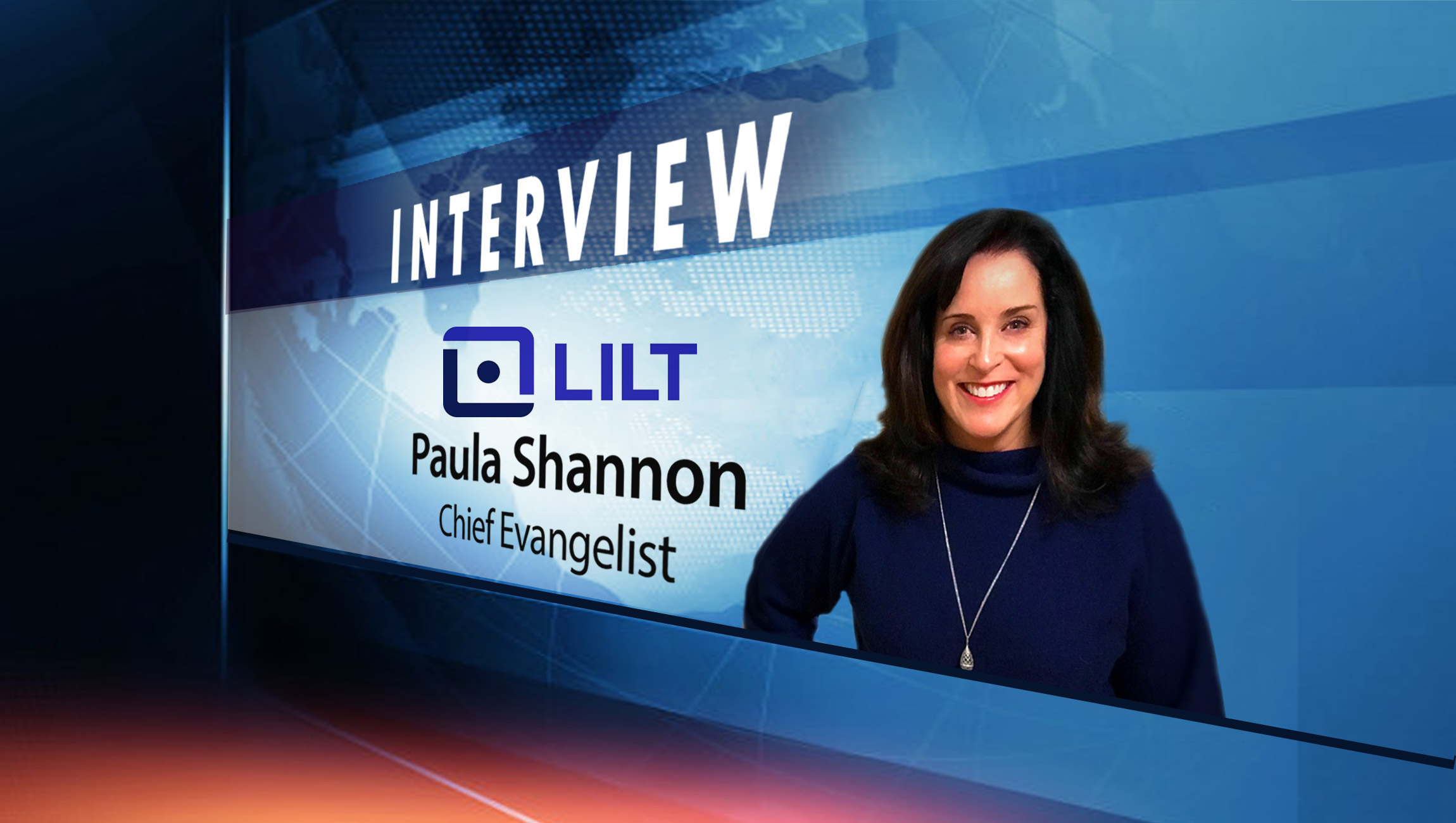SalesTechStar Interview with Paula Shannon, Chief Evangelist at Lilt

The right translation software is a key requirement for global businesses that have a presence in several countries, it makes it easier to assess documents and quicken internal processes as well, Paula Shannon, Chief Evangelist at Lilt talks about the need for augmented tools in this quick chat with us:
_____
Hi Paula, welcome to SalesTechStar! We’d love to hear about you and about Lilt and its growth story…
It’s really an incredible turn in my career to be able to work with the most innovative elements of AI, Neural Machine Translation (NMT), and Language Services at the more “mature” end of my career! In the early stages of the localization industry, we were working to bring published content to select global markets in a very slow, linear production model. As technology evolved, we went from the advent of personal computing, peripherals, and business applications to the explosion of mobile device driven consumer experiences with the need for hyper-local, personalized content available anywhere and at any time. When I first began in 1986, we might have translated content for a client into three or four languages. Today, clients routinely release products and services in over 100 languages, simultaneously.
Read More: SalesTechStar Interview with Michael Ouliel, CEO at BlackSwan Technologies
How has the platform evolved over the years, what are some upcoming additions and enhancements that users can look forward to?
Lilt’s offering has evolved rapidly over the past five years. Initially, the team was focused on providing stand-alone technology. As a result, the founders, both of whom had worked inside the Google translate program, developed a NMT engine that enables translators to work 3-5 times faster than before with human accuracy.
In this approach, really an augmented translation process, NMT engine provides translation suggestions which can be accepted, amended, or rejected. Because the translator has the final say on every single word, translation quality remains high. By evolving to an integrated technology-lead, managed services provider, Lilt was able to make this work for its clients.
This perspective is a radical departure for an industry that had been working with somewhat stagnant translation memory technology (essentially databases for re-use), and experimenting with fully automated translation approaches that attempted to remove the human translator from the process entirely.
How have you seen the growth and demand for AI powered translation software evolve in the last few years: what are your top predictions for this technology and its impact in the B2B segment?
I think that there is one aspect of the growth and demand for AI powered solutions that is a factor well beyond just the translation industry. For the most part, businesses have been focused on Machine Learning systems that use algorithms to learn from human feedback. They ingest corpora, study relevant examples, but they do not, as a rule, spend a lot of time focused on the human-computer interaction aspect of the activity. What is fascinating is the power that Human-in-the-Loop machine learning provides when you seek to truly optimize and perfect a process.
We have seen a lot of focus in the translation industry on the annotation, labelling, identifying, and tagging of data that the machine has difficulty processing. This is usually done as a discreet activity and then “fed” to the machine for learning.
There is no doubt that AI excels at predicting outcomes. AI and ML alone can make the right judgement and even action, based on these predictions, at least 80% of the time.
For the models to approach 100%, human judgement, decision-making, and an adjustment are required. Building a system that channels human input and learns from these nuanced choices is truly innovative and ground-breaking.
Read More: Three Simple Tips for Successful CRM implementation
How according to you will AI and ML create a shift in how translation platforms are built in the coming years?
It is exciting to see how this focus on augmented translation is creating a new partnership for translation technology innovators, service providers, and translators. For the past 15 years, research and development has really been focused on ways to increase speed, reduce cost, and maintain quality while removing the human translator from the equation. Today, with integrated services models that use augmented NMT to improve the translators’ throughput and productivity, we are working more collaboratively with translators, and with greater success.
Can you talk about some innovative translation products (tech) from the global marketplace that has grabbed your attention in the recent past?
Well, for any language geek, it would have to be the exciting developments happening in the field of what we call speech-to-speech translation. With early research from academia and the government agencies now fueling consumer solutions that power effortless multilingual exchanges in the areas of internet conferencing, tourism, and across functions such as support ecommerce, this is where technology will eventually provide the biggest impact to personal experiences.
As translation software evolves for business use – what are some of the biggest features you feel innovators still need to enhance to meet high level needs?
Most businesses are struggling to harness, and derive value from, the content that they have: market intelligence, user generated content, support, and customer experience feedback, etc. Rather than introducing another layer of complexity, translation technology must work to integrate more seamlessly into each function and process flow. Today, much of the translation effort at a given client is centralized and managed as one might have managed printing or photocopying in the 1980’s. The ability to produce effective multilingual content should be natural and native within every team and function. I would love to see the localization expertise and the localization leadership position migrate into the Chief Customer Experience Officer’s role and team.
A change of pace before we wrap up, a few (or top Five!) best practices you’d share with every tech business sales and marketing leader as they drive revenue during a pandemic and slowdown?
Having lived through the tech crash in 2008/2009, I see many of the same best practices.
Just as we have learned with this pandemic, now is the time for science. Trust the numbers. Focus on leading, not lagging, indicators, no matter how alarming or distressing those projections may appear. Believe what the data trends tell you, and plan or right-size your business accordingly. Wishful thinking will not make it so.
Balance that necessarily quantitative approach with true human connection and compassion. Speak to your customers and understand their concerns and hardships. Be honest with your employees and co-workers. Be flexible where and when you can manage this. Conducting yourself and your business with high integrity through difficult times will always be the right approach.
Look for the brand new, unimaginable opportunities. Even our current crisis is providing innovative digital transformations that provide extraordinary chances for entrepreneurial thinking.
A parting thought on your biggest goof-up and the learning that came from it!
Talent is everything. Many of the biggest errors I have made come from not allocating talent properly. Specifically, I have often fallen victim to the misguided thinking that when you have a new offering, or risky new product, you can minimize the downside by staffing this with new, untested talent, or middle of the pack performers.
Read More: SalesTechStar Interview with Kip Turco, CEO at StackPath
Just the opposite is true! If a new offering or segment is the right strategic path forward and critical to your company’s growth, then you must deploy your top talent there and take the risk.
Lilt is an AI-powered language service provider (LSP). Lilt’s innovative solution combines adaptive neural machine translation technology, an enterprise translation management system, and world-class professional translators to give organizations everything they need to scale their translation programs, go-to-market faster than ever, and improve the global customer experience.
Paula Shannon is the Chief Evangelist at Lilt
Sales and Marketing Tips by The Experts Are Waiting for you on The SalesStar Podcast, Hear More:




